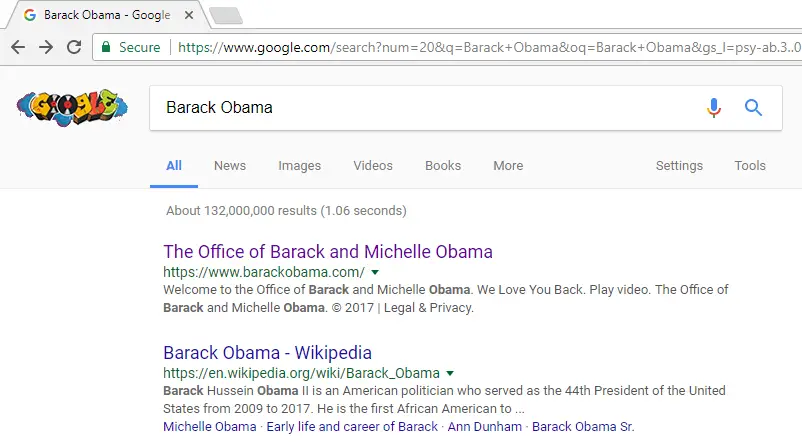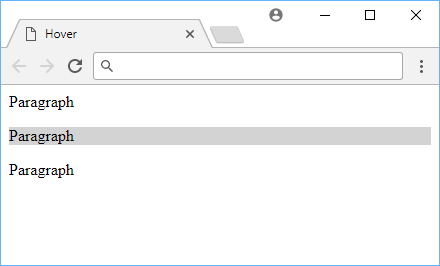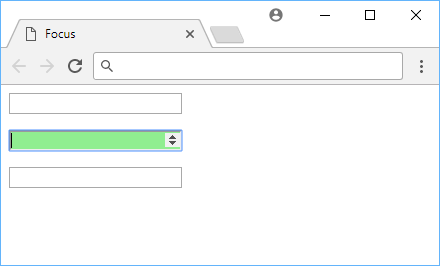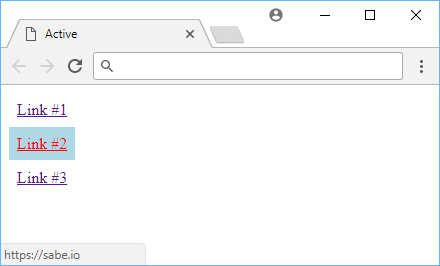What are Pseudo-classes?
CSS allows us to target elements based on their state. For example, we can target elements that are currently hovered over, or elements that are currently focused. These are called pseudo-classes. By adding it to your selector, you can style elements only if they're in the state you want them to be. We will go over the most common pseudo-classes in this article.
Link
You can target unvisited links by adding the :link pseudo-class to your selector.
CSSa:link {
color: blue;
}
This will only apply to unvisited links.
Visited
When you want to target visited links, you can add the :visited pseudo-class to your selector.
CSSa:visited {
color: purple;
}
You've seen uses of pseudo-classes throughout your times on the web. A new link on a Google search is blue, but when you have clicked on it before, it is purple.
 A Google search for Barack Obama.
A Google search for Barack Obama.
Hover
You can apply styles to an element depending on whether or not it is currently being hovered over. Let's say you wanted to change the background color of paragraph tags if they're being hovered over. You can add the :hover pseudo-class to your selector. Let's see an example.
HTML<!DOCTYPE html>
<html>
<head>
<title>Hover</title>
<style>
p:hover {
background-color: lightgray;
}
</style>
</head>
<body>
<p>Paragraph</p>
<p>Paragraph</p>
<p>Paragraph</p>
</body>
</html>
 An example of hover.
An example of hover.
Focus
An element is in focus when it is selected or clicked on and/or ready for any kind of input, like a textbox or dropdown. You can target elements that are in focus by adding the :focus pseudo-class to your selector. Let's see an example.
HTML<!DOCTYPE html>
<html>
<head>
<title>Focus</title>
<style>
input {
margin-bottom: 1rem;
}
input:focus {
background-color: lightgreen;
}
</style>
</head>
<body>
<div><input type="number" /></div>
<div><input type="number" /></div>
<div><input type="number" /></div>
</body>
</html>
 An example of focus.
An example of focus.
Active
The active state is enabled when the user activates an element, like when a link is currently being clicked on. You can target elements that are in active state by adding the :active pseudo-class to your selector. Let's see an example. Let's see how this works.
HTML<!DOCTYPE html>
<html>
<head>
<title>Active</title>
<style>
div {
margin: 1rem 0;
}
a {
padding: 0.5rem;
}
a:active {
background-color: lightblue;
}
</style>
</head>
<body>
<div><a href="https://sabe.io">Link #1</a></div>
<div><a href="https://sabe.io">Link #2</a></div>
<div><a href="https://sabe.io">Link #3</a></div>
</body>
</html>
 An example of active.
An example of active.
Resources
 Create an RSS Reader in Node
Create an RSS Reader in Node How to Serve Static Files with Nginx and Docker
How to Serve Static Files with Nginx and Docker Getting Started with Sass
Getting Started with Sass How to Scrape the Web using Node.js and Puppeteer
How to Scrape the Web using Node.js and Puppeteer Getting Started with Handlebars.js
Getting Started with Handlebars.js Build a Real-Time Chat App with Node, Express, and Socket.io
Build a Real-Time Chat App with Node, Express, and Socket.io Getting User Location using JavaScript's Geolocation API
Getting User Location using JavaScript's Geolocation API Creating a Twitter bot with Node.js
Creating a Twitter bot with Node.js Using Push.js to Display Web Browser Notifications
Using Push.js to Display Web Browser Notifications Getting Started with React
Getting Started with React How To Create a Modal Popup Box with CSS and JavaScript
How To Create a Modal Popup Box with CSS and JavaScript Getting Started with Moon.js
Getting Started with Moon.js
